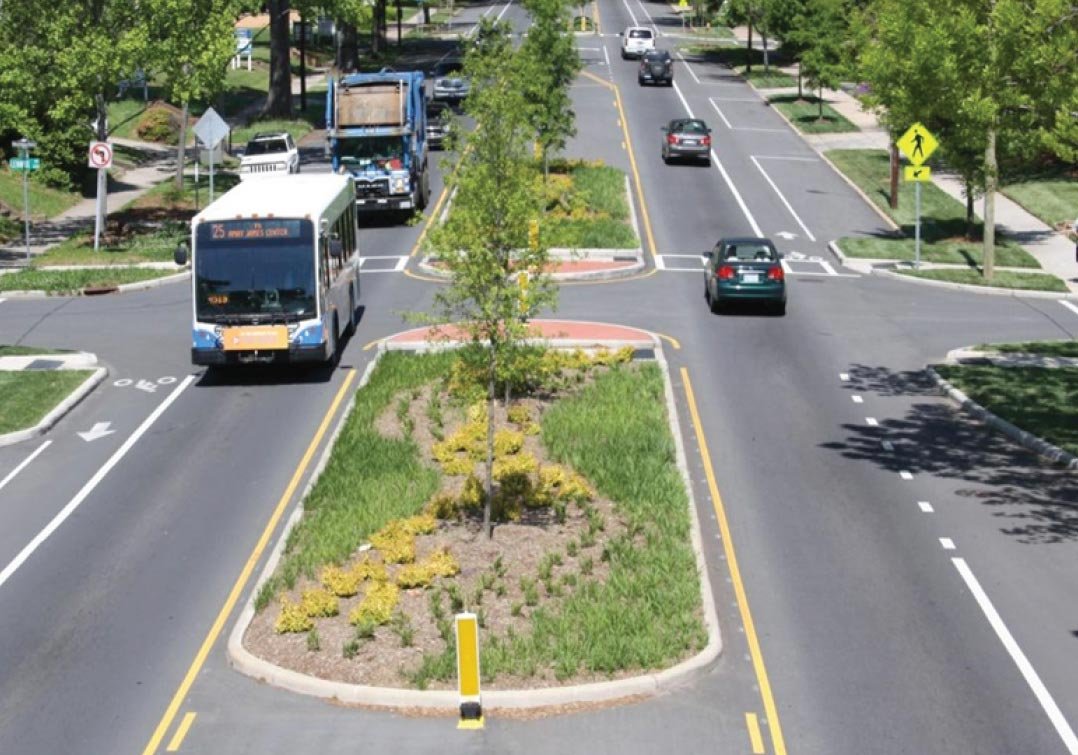Raised Medians: 19th Avenue & Cactus Road
Safety and Beauty: Why Raised Medians are Essential for Arterial Streets
Wide, high-speed arterial streets often cut through neighborhoods, posing significant challenges to safety and quality of life. The installation of raised medians is a proven solution that addresses these issues by improving traffic flow, enhancing the streetscape, and, most importantly, protecting our most vulnerable road users.
Dramatically Improved Road Safety
Raised medians are a critical safety countermeasure that benefits everyone:
Pedestrian Refuge: Medians serve as a safe refuge island for pedestrians, allowing them to cross one direction of traffic at a time. This significantly reduces the complexity and danger of crossing wide, multi-lane streets.
The Data is Clear: Studies cited by the Federal Highway Administration (FHWA) show that providing raised medians or pedestrian refuge areas at crossings can lead to a significant reduction in pedestrian crashes—up to 46% at marked crosswalks.
Reduced Vehicle Crashes: By creating a physical barrier between opposing lanes of traffic and strategically limiting left-turn movements, medians reduce the most severe types of collisions. Research from the Transportation Research Board (TRB) and other sources shows that installing a raised median on an undivided highway can reduce the overall vehicle accident rate by 15 to 35 percent.
Speed Management: The physical presence of a median helps reduce average vehicle speeds and improves driver predictability by channelizing traffic, creating a more orderly and safer environment for cyclists and vehicles alike.
Environmental and Aesthetic Benefits
Beyond safety, raised medians are a valuable asset for neighborhood beautification and environmental health:
Green Infrastructure: Medians provide essential space for landscaping, street trees, and drought-tolerant plantings. These features break up the monotony of wide concrete streets, making the corridor more appealing and welcoming for residents.
Mitigating the Heat Island Effect: In urban areas, large expanses of dark pavement absorb and radiate heat. Landscaping within raised medians, particularly with trees and shrubs, adds shade and cooling, helping to mitigate the urban heat island effect on wide city streets.
In short, raised medians transform high-volume, high-risk arteries into safer, greener, and more visually appealing community corridors—a clear win for neighborhood quality of life.
Additional Information
Medians and Pedestrian Refuge Islands in Urban and Suburban Areas ・Federal Highway Administration
Pedestrian Safety Guide and Countermeasure Selection System ・pedbikesafe.org

